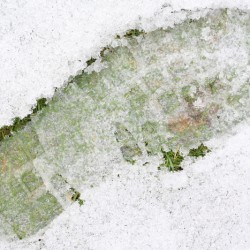
Caring for a lawn needs to be done even during the winter months when the grass is dormant or growing slow. Yes, it even extends to when the ground is covered in snow! Winter lawn maintenance is necessary to keep the grass healthy and alive when spring comes.
Winter care starts in fall when you prepare the lawn by mowing it before the ground has started to freeze. Mow the grass close to the ground so that new growth is removed and only the older and hardier grass remains. There is a smaller chance that the older grass will succumb to disease and dry out in winter.
Care for a lawn by mowing close to the ground will also mean that there will be lesser dead grass or grass debris under the snow. For warm season grasses cut at one inch lower than usual, while cool season grasses at two inches lower. Do this at a gradual rate wherein the height is adjusted over five mowing sessions instead of cutting low abruptly to avoid stress.
For your lawn’s fertilizing needs in winter, only those with cool season grasses need to be fertilized. However, apply smaller amounts than usual since grass grows slower during the winter months. Fertilizer care for a lawn with warm season grasses is not necessary because these grasses are dormant throughout the winter season. Applying fertilizer may just encourage weed growth.
There is also no need for watering a lawn with warm season grasses unless prolonged winter droughts have occurred. In this instance, light watering is needed to prevent soil compaction and loss of nutrients in the topsoil. For those with cool season grasses, winter watering is done no more than once weekly and only when the temperatures rise to above freezing. Cool season grasses are best watered in the morning. Performing your watering care for a lawn in the mornings will ensure that the grass will have dried out by nighttime.
During the winter, it is advisable to break up deep or large areas of snow. Level the snow evenly on the lawn to make it melt quickly. If snow has piled up onto the grass and melts slowly, snow mold fungus disease can happen. Periodically check the lawn in winter for areas that may have developed fungus problems and if there are any, apply fungicide right away so that the fungus won’t spread.
One may be free from mowing duties during the winter but daily care for a lawn is still necessary in the form of ensuring that it is clear of dead leaves and other debris. Remove fallen leaves, twigs, and other dead plant matter on a daily basis. When left alone, these things can form a mat under the snow. This mat can smother the grass and prevent it from growing back when spring comes. When the snow has started to melt, continue the removal of debris to clear the way for new grass.
In late winter or early spring, start to remove thatch or dead plant matter by raking the grass. This often-missed step in proper care for a lawn and garden is necessary especially if thatch is already more than 1 cm thick.
For more on how to care for a lawn during the wintertime, visit my website.
There, you’ll find tips and tricks for getting the greenest, fullest lawn possible. You’ll also find business packages, tools and equipment for all your lawn care needs, whether you are a homeowner, property manager, or full-time lawn care professional.
Find solutions for all your lawn care issues and needs at http://www.worldoflawncare.com.
